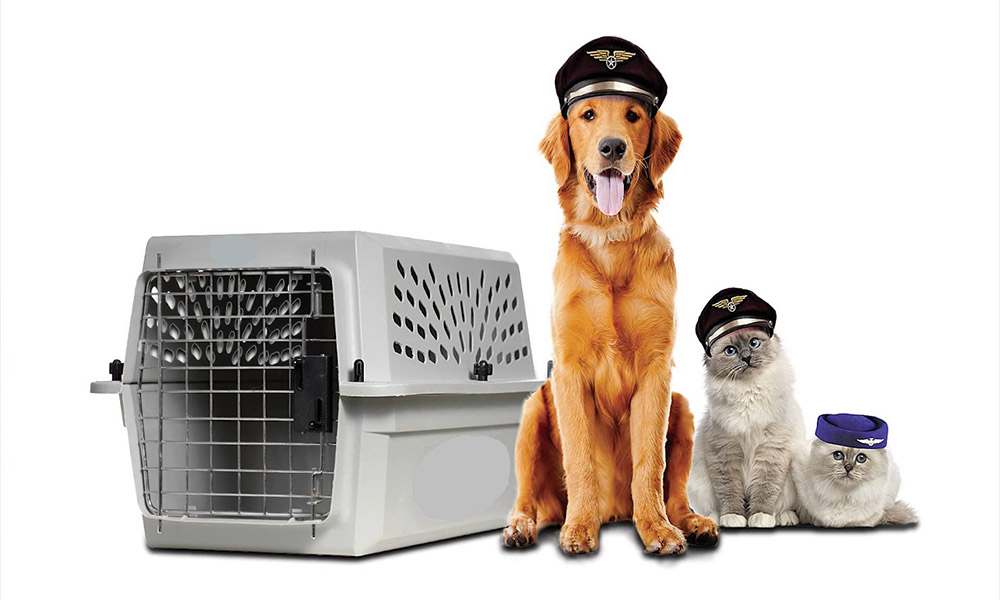The Ultimate Guide to Pet Transport: Essential Tips and Knowledge
Transporting pets, whether for relocation, travel, or medical reasons, requires careful planning and consideration.
Ensuring the safety, comfort, and well-being of your furry friends during their journey is paramount.
In this guide, we will cover key aspects of pet transportation, from choosing the right carrier to understanding legal requirements and tips for a stress-free trip.

1. Choosing the Right Pet Carrier
The first step in transporting your pet is selecting the right carrier. The carrier should be safe, comfortable, and suitable for your pet’s size. Here are some important factors to consider:
- Size: The carrier should provide enough space for your pet to stand, turn around, and lie down comfortably. It should not be too large or too small.
- Ventilation: Good airflow is essential. Make sure the carrier has ventilation holes on multiple sides to keep your pet cool and calm.
- Security: The carrier should be secure and well-constructed to prevent escapes or injuries. Check that doors and locks are properly fastened.
- Comfort: Add a familiar blanket or bedding to make the carrier more inviting for your pet. This can help reduce anxiety and stress.
2. Preparation Before the Trip
Preparation is key to ensuring a smooth journey for your pet. Here are some essential steps:
- Vet Check-up: Before traveling, take your pet for a check-up. Make sure they are healthy and up to date on vaccinations. Some countries and airlines require specific health certificates.
- Microchipping: If your pet is not already microchipped, consider getting it done. This helps ensure that your pet can be identified if they get lost.
- Acclimatize Your Pet to the Carrier: If your pet is not used to being in a carrier, gradually introduce them to it several days or weeks before the trip. This helps reduce anxiety on the day of travel.
- Hydration and Food: Ensure your pet is well-hydrated and has had a light meal before the journey. Avoid feeding them immediately before travel to prevent motion sickness.
3. Understanding Transportation Regulations
Different forms of transportation have specific regulations when it comes to traveling with pets. Whether you’re flying, taking a train, or driving, it’s essential to know the rules and requirements for pet travel.
- Air Travel: Airlines typically have strict guidelines for pet travel, including carrier size, documentation, and vaccination requirements. Some airlines allow pets in the cabin, while others require pets to be transported in the cargo hold. Be sure to book your pet’s travel well in advance and check with the airline for specific requirements.
- Train Travel: If you’re traveling by train, check the train company’s pet policy. Some trains allow pets in carriers, while others may require pets to be booked in advance or may have size restrictions.
- Car Travel: When traveling by car, make sure your pet is safely secured in the vehicle. Use a harness, pet seatbelt, or a secure carrier to prevent injury. Take frequent breaks to allow your pet to stretch and use the bathroom.
4. Tips for a Stress-Free Journey
Travel can be stressful for pets, especially if they are not used to long trips or new environments. Here are some tips to help minimize stress:
- Keep Your Pet Calm: Use pheromone sprays or calming collars designed for pets to reduce anxiety. You can also try familiarizing your pet with the sound and motion of the vehicle or carrier before the trip.
- Maintain Routine: Try to keep your pet’s routine as consistent as possible. Feed them at their usual times, and if possible, try to maintain their sleeping schedule.
- Comfort Items: Bring familiar items such as their favorite toy or blanket. These items can help comfort them during the journey.
- Avoid Sedatives: While some pet owners consider giving their pets sedatives for travel, it’s generally not recommended. Sedatives can interfere with your pet’s ability to regulate body temperature and balance, which could be dangerous.
5. International Pet Travel
When traveling internationally, there are additional considerations you need to keep in mind:
- Quarantine Regulations: Many countries have quarantine requirements for pets arriving from other countries. Make sure you understand the quarantine laws for your destination country well in advance.
- Vaccination and Health Certificates: Some countries require specific vaccinations or health certificates for entry. For example, rabies vaccination is often mandatory.
- Pet Passport: If you’re traveling within the EU, your pet will need a pet passport, which includes details of vaccinations, microchipping, and other medical information.
6. Post-Travel Care
Once you’ve completed your pet’s journey, it’s important to provide post-travel care:
- Monitor Your Pet’s Health: After a long journey, especially if they traveled by air, monitor your pet for any signs of stress, fatigue, or illness. Contact your veterinarian if anything seems unusual.
- Reintroduce Them to Their Home: If your pet is returning from a long-distance trip or relocation, give them time to adjust to their new environment. Gradually introduce them to their familiar routines.
Conclusion
Pet transportation requires thorough planning and attention to detail to ensure your pet’s safety and comfort. Whether you’re traveling by air, land, or sea, it’s important to familiarize yourself with the necessary regulations, prepare your pet for the journey, and take steps to reduce their stress. With the right preparation, your pet can have a smooth, safe, and comfortable travel experience.















